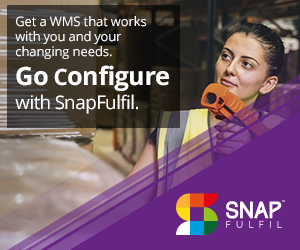Three steps to building a watertight budget for new warehouse software
When entering into any selection project for new warehouse software, cost should be at the forefront of your mind. But budgeting for new warehouse software can be particularly difficult when pricing information is not readily available. There’s a number of influential factors that can cause a budget to become derailed. The following steps outline ways in which you can keep your finances on track to ensure a good ROI on your investment in warehouse technology:
1. Take requirements gathering seriously
Requirements gathering should be seen as the first step in building your budget for new software. Deciding which warehouse software features meet your needs is key. First, you have to establish what those needs are in the context of the wider aims of the company. Start by ranking your requirements in terms of their necessity to operations. These generally fall into two categories - those requirements that must be addressed and those that would be advantageous (but aren’t essential).

Another important question to consider at this stage is will your new warehouse software have the functionality for operational processes and be able to integrate with existing systems? Over 80% of WMS vendors claim that the average period of use for their software is ten years or longer. Considering this, you must take into account any future requirements which means - where possible - forecasting any changes to warehouse processes that will need to be accommodated by the system.
Finally, it’s vital to not limit your inquiry to management alone. If you are looking to change or upgrade your current warehouse management system (WMS), you should ask members of different departments to provide feedback on requirements that are difficult to meet for example, fulfilment rate or real-time data tracking.
2. Compare WMS pricing models
Once you have a definitive list of requirements to work from, the best way to move forward is with WMS pricing models. Arguably one of the most significant choices to make is which pricing model to pick - a subscription model (usually monthly) or perpetual licensing. Perpetual licensing is commonly used with on-premise while a subscription model operates as Software as a Service (SaaS) using the cloud for processing and data storage. With SaaS, usually the more users you pay for, the more cost efficient the service. Some WMS vendors will also take into consideration the number of warehouses and their locations in pricing.
Software with a perpetual license fee structure often has higher costs upfront because it entails purchasing the software outright. But long-term costs associated with on-premise generally stay low as long as you commit to the system for a number of years. Whichever WMS pricing model you decide works best for you, bear in mind that you need find a subscription option that will allow you to scale as demand grows.
3. Factor in any ‘hidden’ costs
Hidden costs are one of the biggest reasons that WMS selection projects go over budget. There are two main areas to address here, the first being training. Don’t underestimate how long it will take to train all staff as users - new and old. Different staff members will require different levels of support according to their job role e.g. warehouse picking staff will need alternative guidance to those in the IT department.
Your training program should be built around the full scale of your operations. Ask yourself, does your vendor provide training which includes support for onboarding and continued learning? Do you need to consider employing a third party consultant? Building in contingency for refresher training is important and will pay dividends.
The second hidden cost associated with a building a budget for warehouse software is implementation. You must remember that compatibility with existing systems is not guaranteed and that modifications might need to be made, which could be expensive. Any new technology should be able to replicate the same workflow as before.
Consistent funding should be made available for the lifecycle of your WMS and you should plan for this from the outset. If there’s evidence of strong ROI in the initial implementation phase then you’re more likely to secure funding for growth and maintenance in the future.



